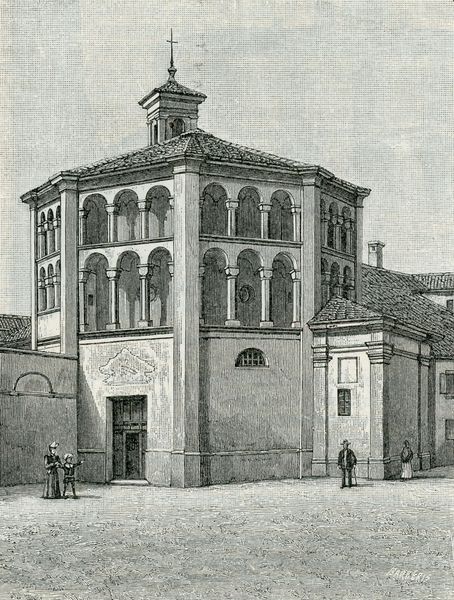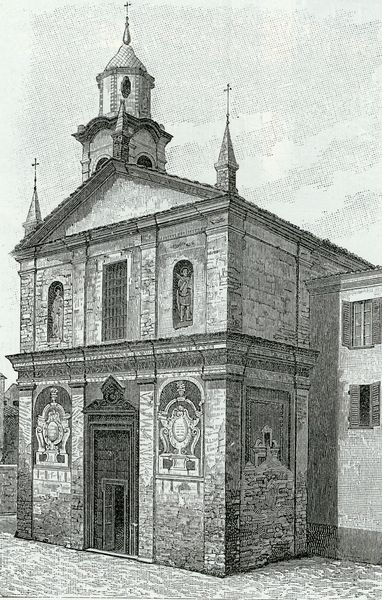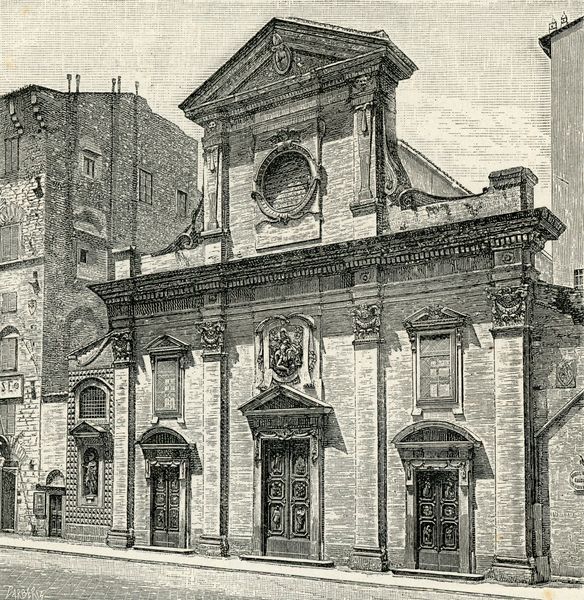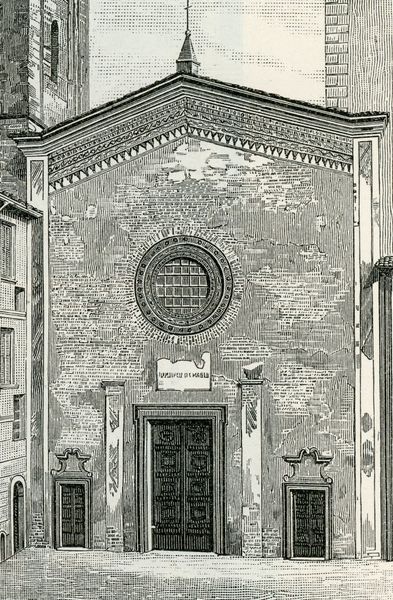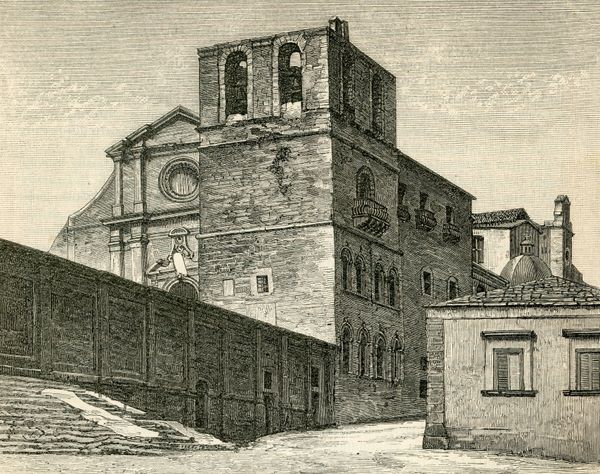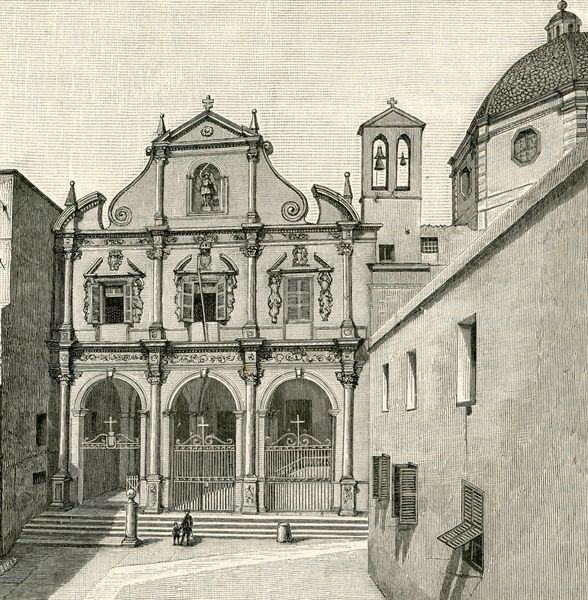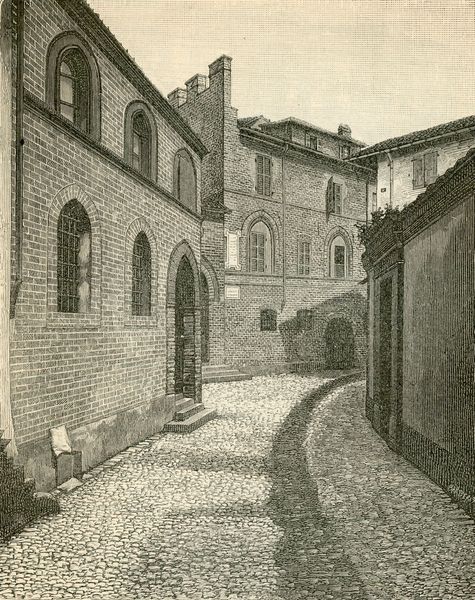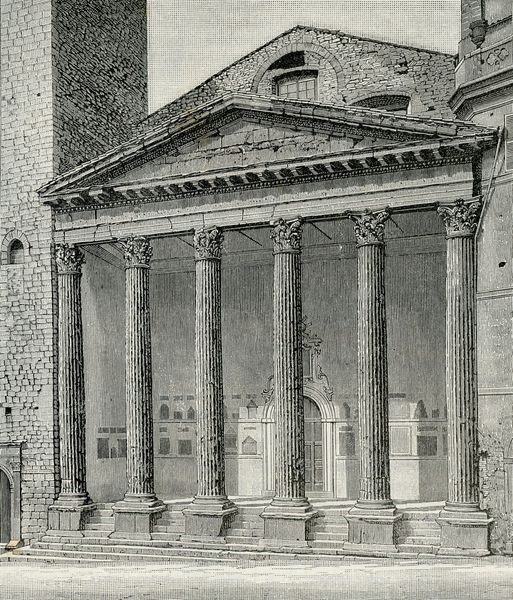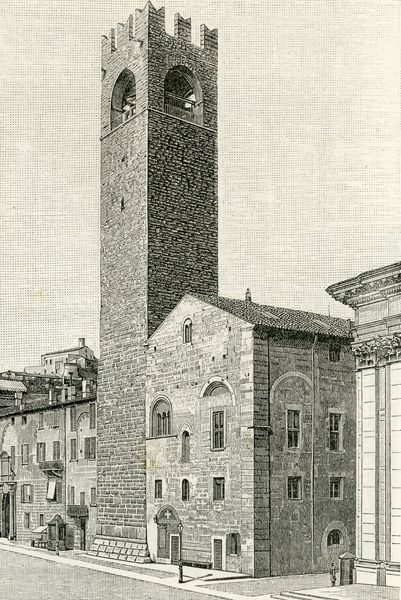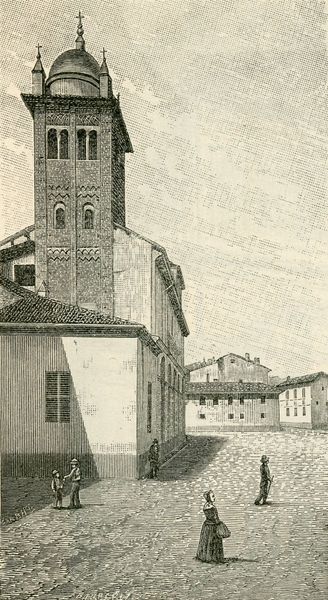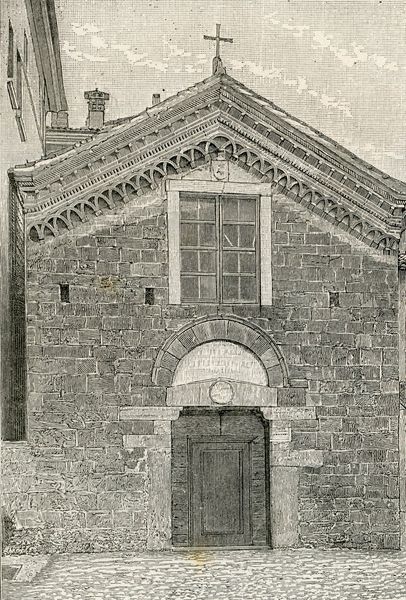
drawing, print, etching, pencil, architecture
#
drawing
# print
#
etching
#
pencil sketch
#
charcoal drawing
#
pencil
#
architectural drawing
#
architecture drawing
#
cityscape
#
architecture
#
realism
Copyright: Public domain
Editor: This is "Casa Gotica in Tortona," an etching by Giuseppe Barberis from 1890. I'm really struck by the contrast – it’s like this detailed historical building is being swallowed up by these more imposing, almost neoclassical structures around it. What story do you see unfolding here? Curator: Well, looking at it from a historical perspective, the artwork speaks volumes about urban development and the changing perception of the past. This "Casa Gotica" – likely a romanticized label itself – is being framed by buildings representing a different, perhaps more "modern," era. How do you think the artist uses the etching technique to emphasize this contrast? Editor: It’s the level of detail, maybe? The newer buildings seem less textured, almost smoothed over, while the older building is very detailed. The rough texture almost feels more authentic. Curator: Exactly! The etching captures the granular quality of the old building. Consider also the rise of historic preservation movements at the end of the 19th century. An etching like this might function as both documentation and perhaps even a quiet act of resistance against homogenizing urban change. How do you think this image might have been used or viewed at the time? Editor: I guess it could have been a souvenir, but also maybe a reminder of what they were losing as cities modernized? Curator: Precisely. Prints like this often circulated widely, shaping public opinion about what was worth saving. Did Barberis’ choice to depict this specific juxtaposition influence your view on urban preservation? Editor: Definitely! I never thought about art being used like that – to shape how people thought about cities. I thought it was just a snapshot of an old building. Curator: Art acts as a visual record, always open to interpretation within evolving cultural and political landscapes. Editor: It’s really interesting to think about it not just as art, but also as a historical document shaping opinions!
Comments
No comments
Be the first to comment and join the conversation on the ultimate creative platform.
